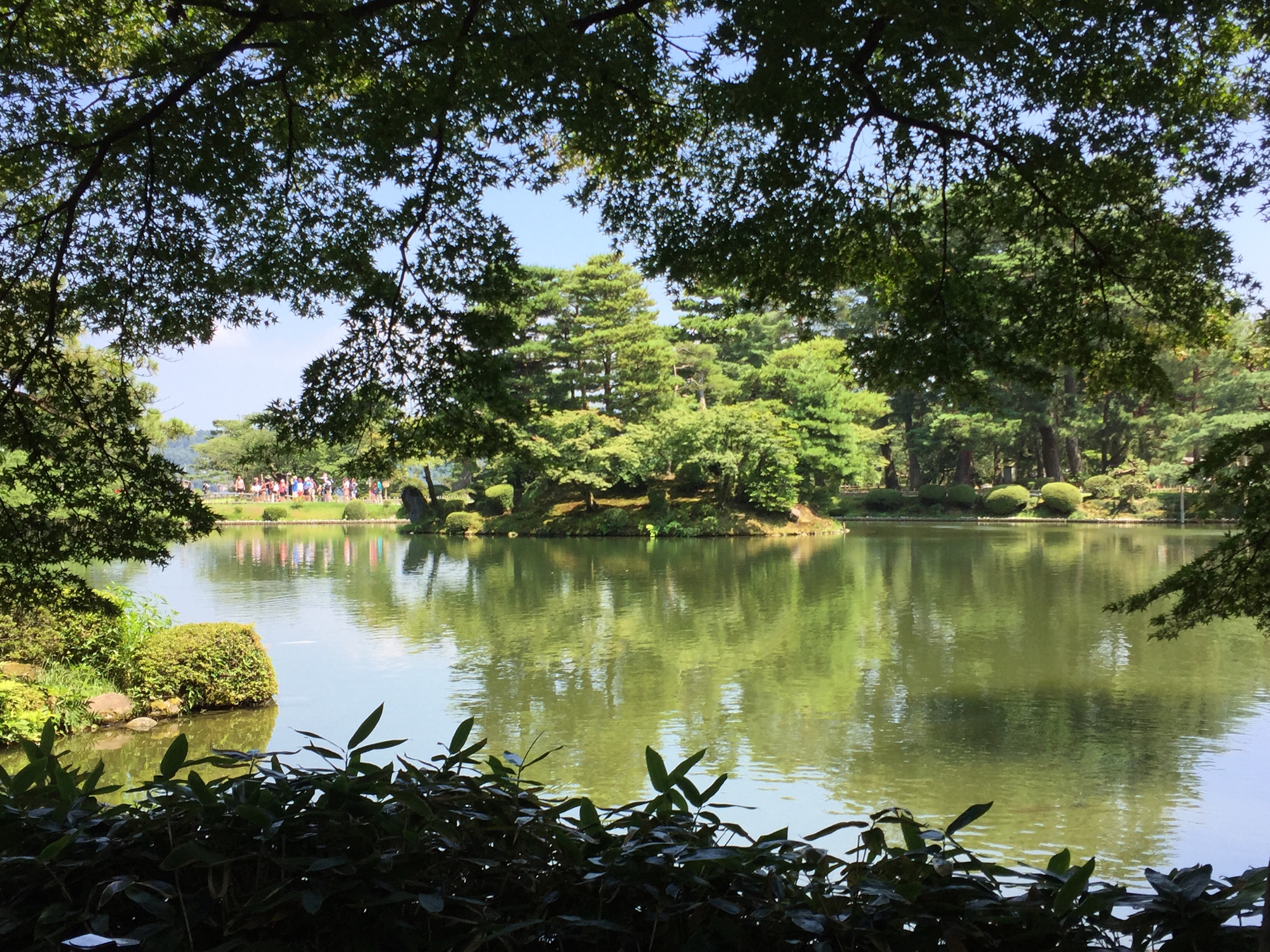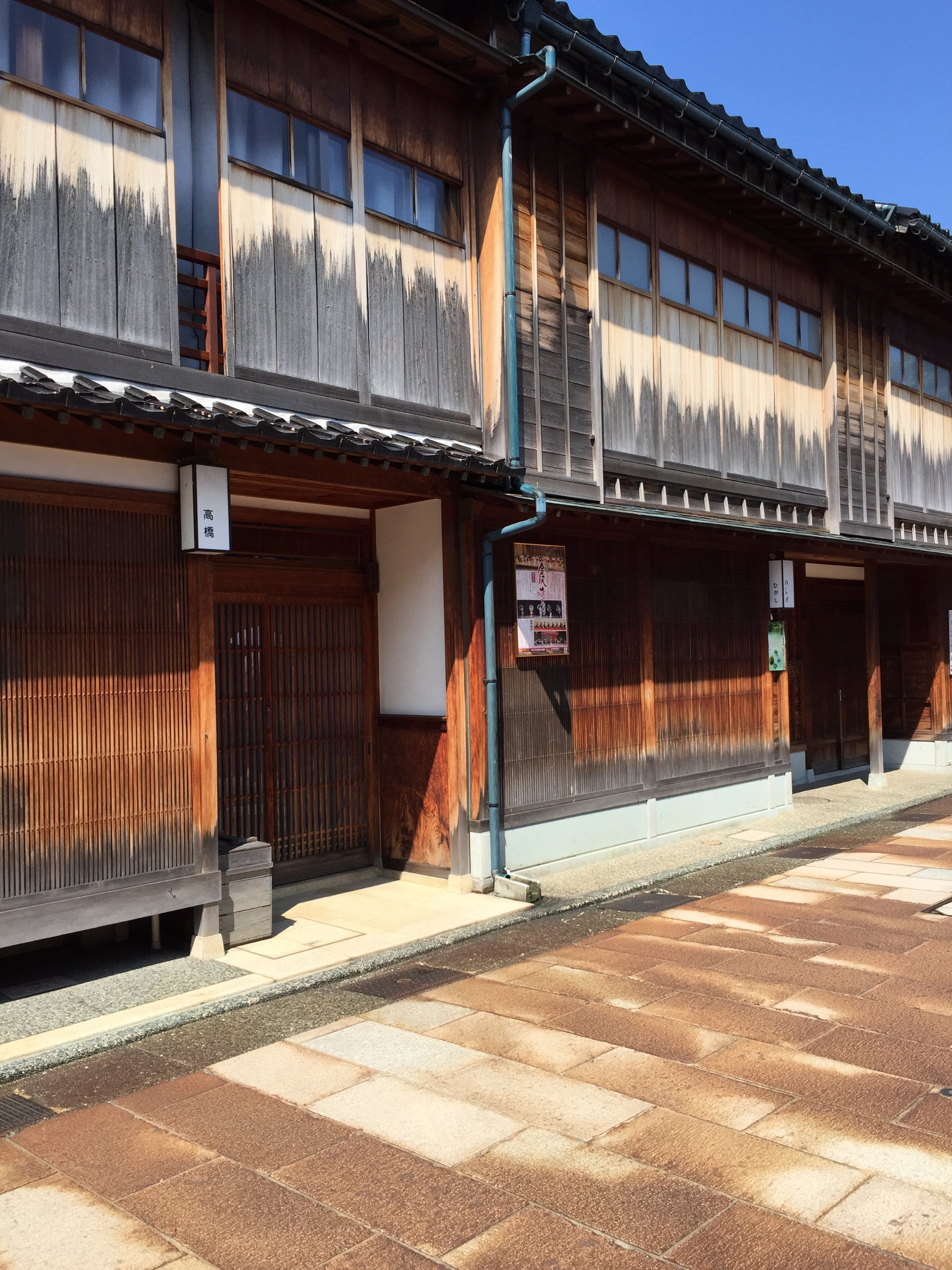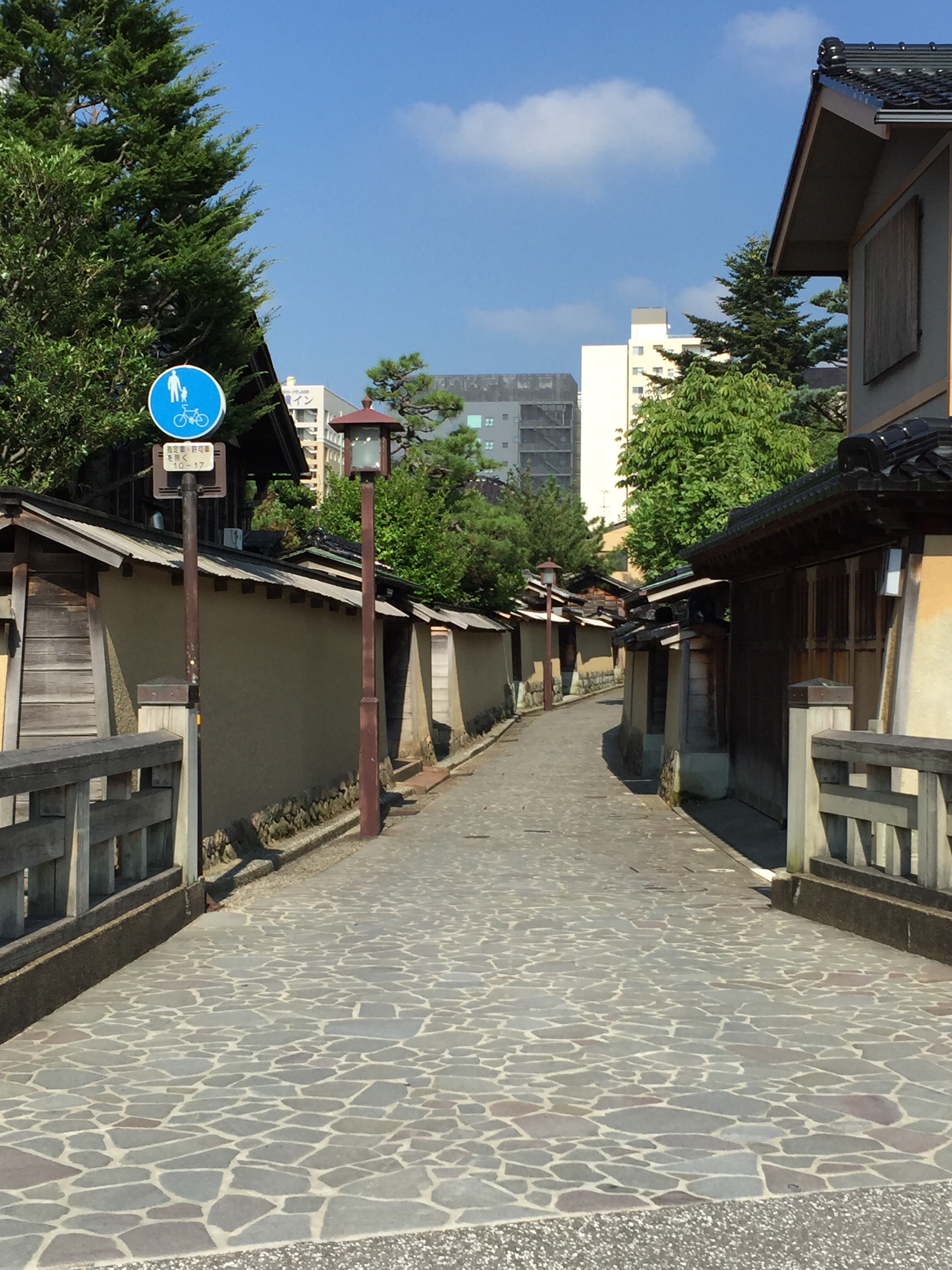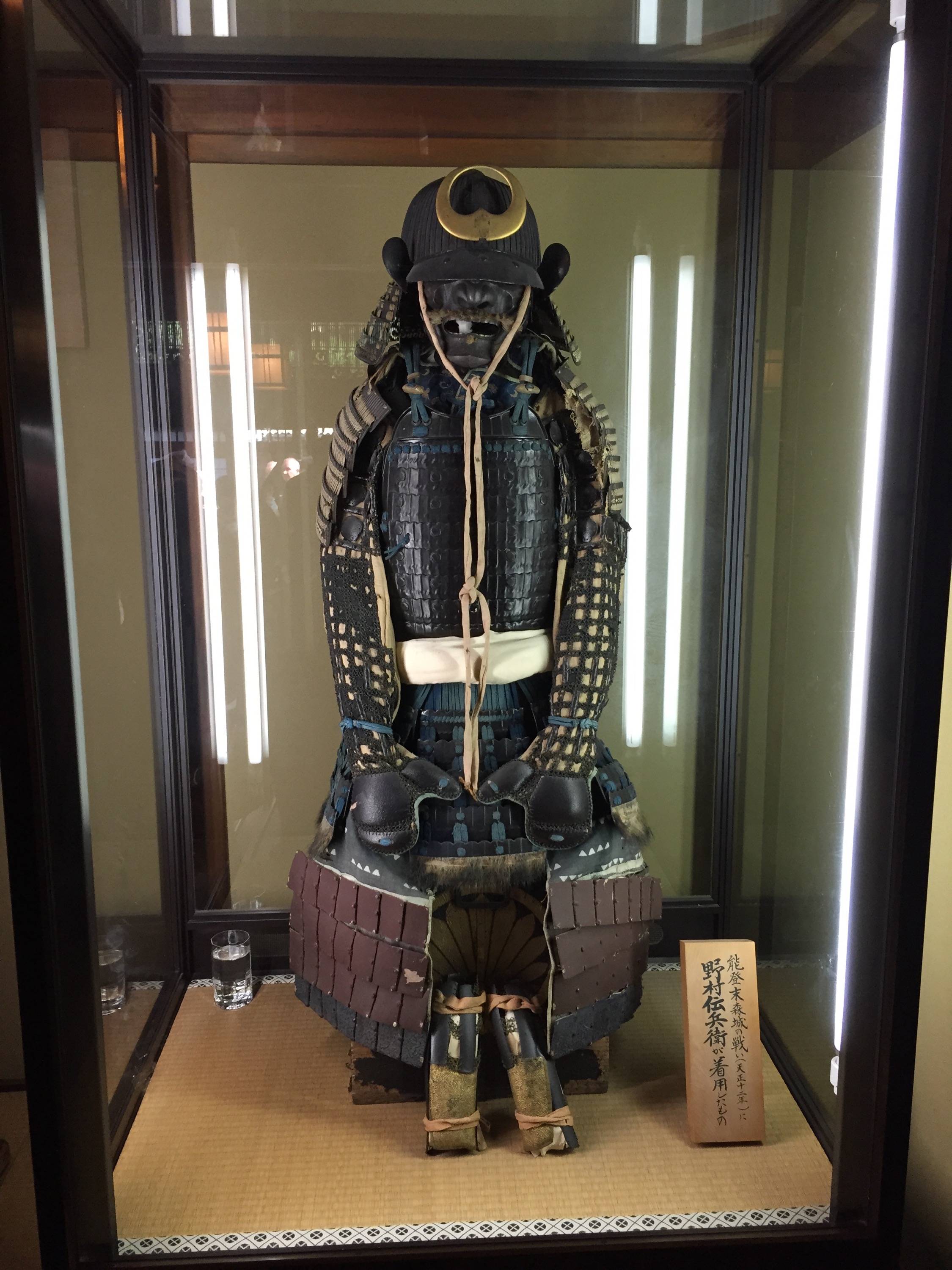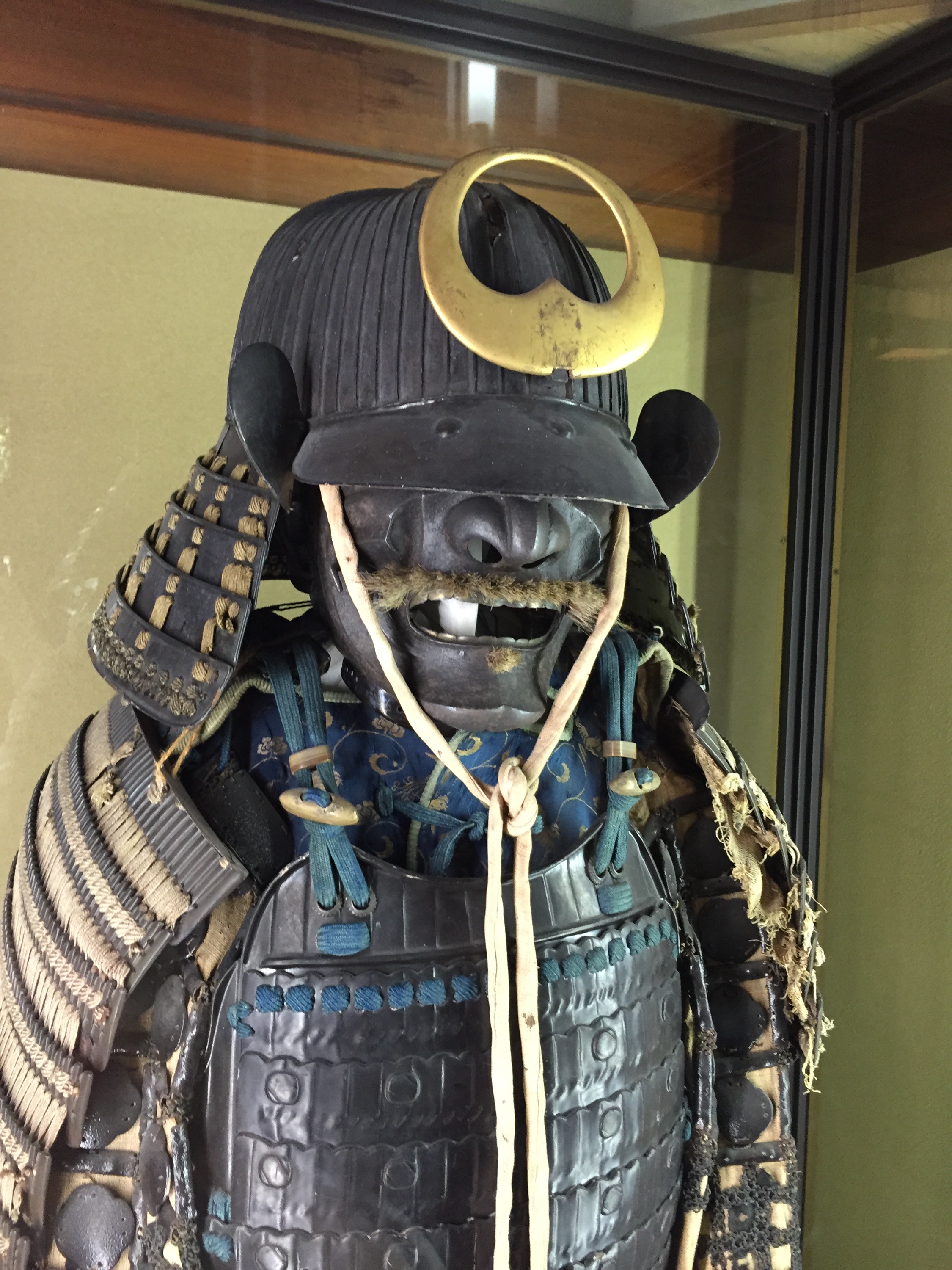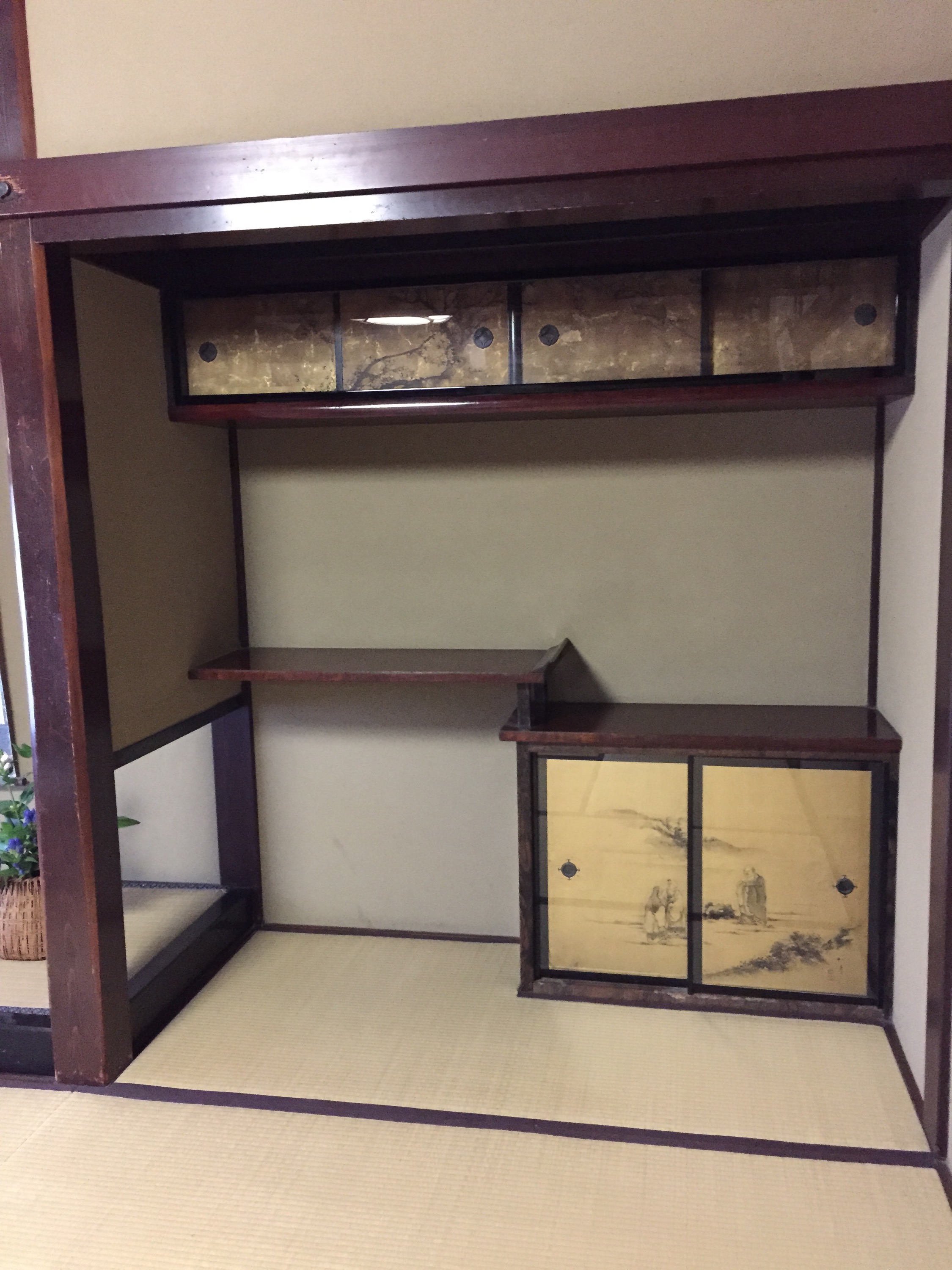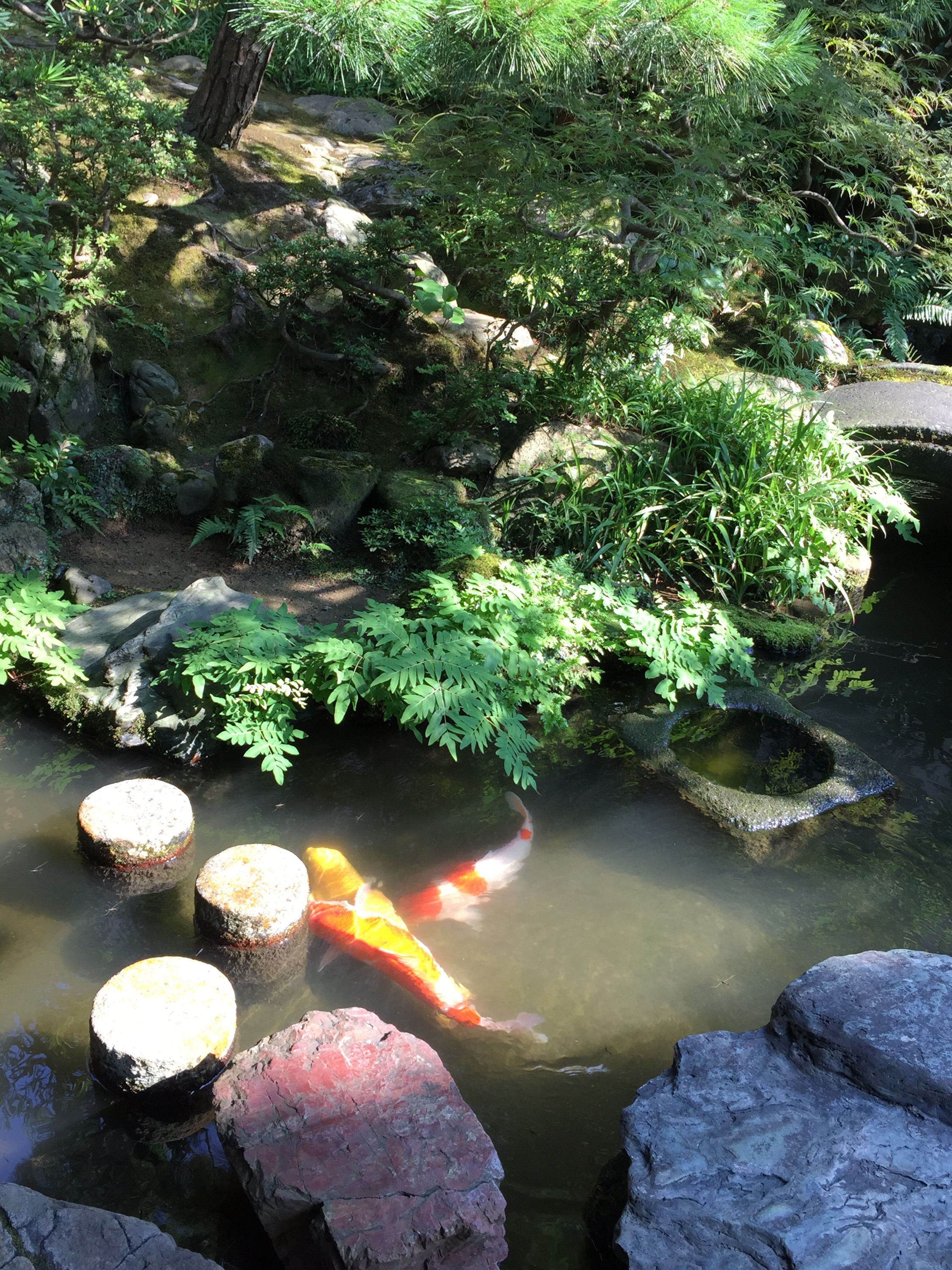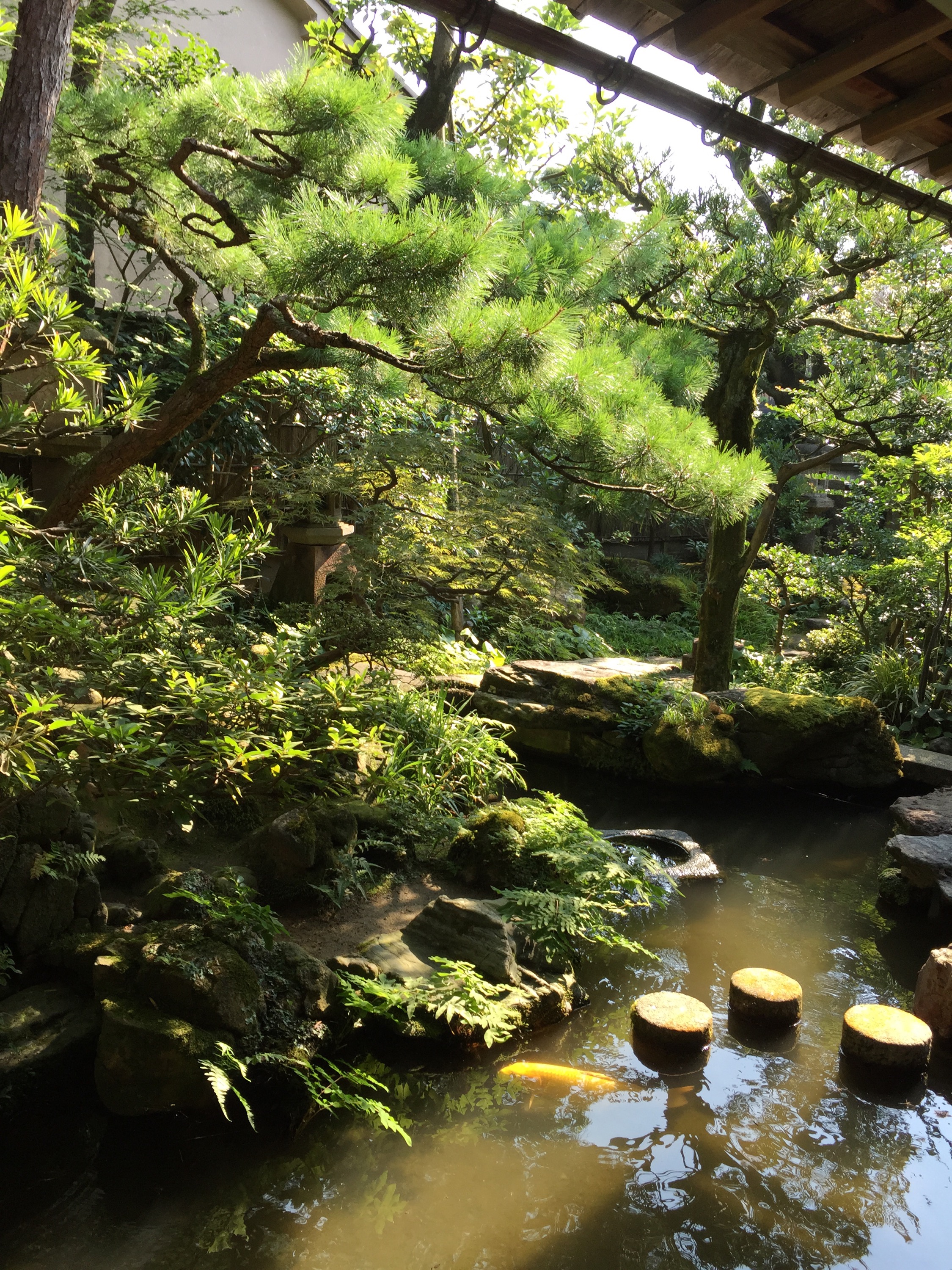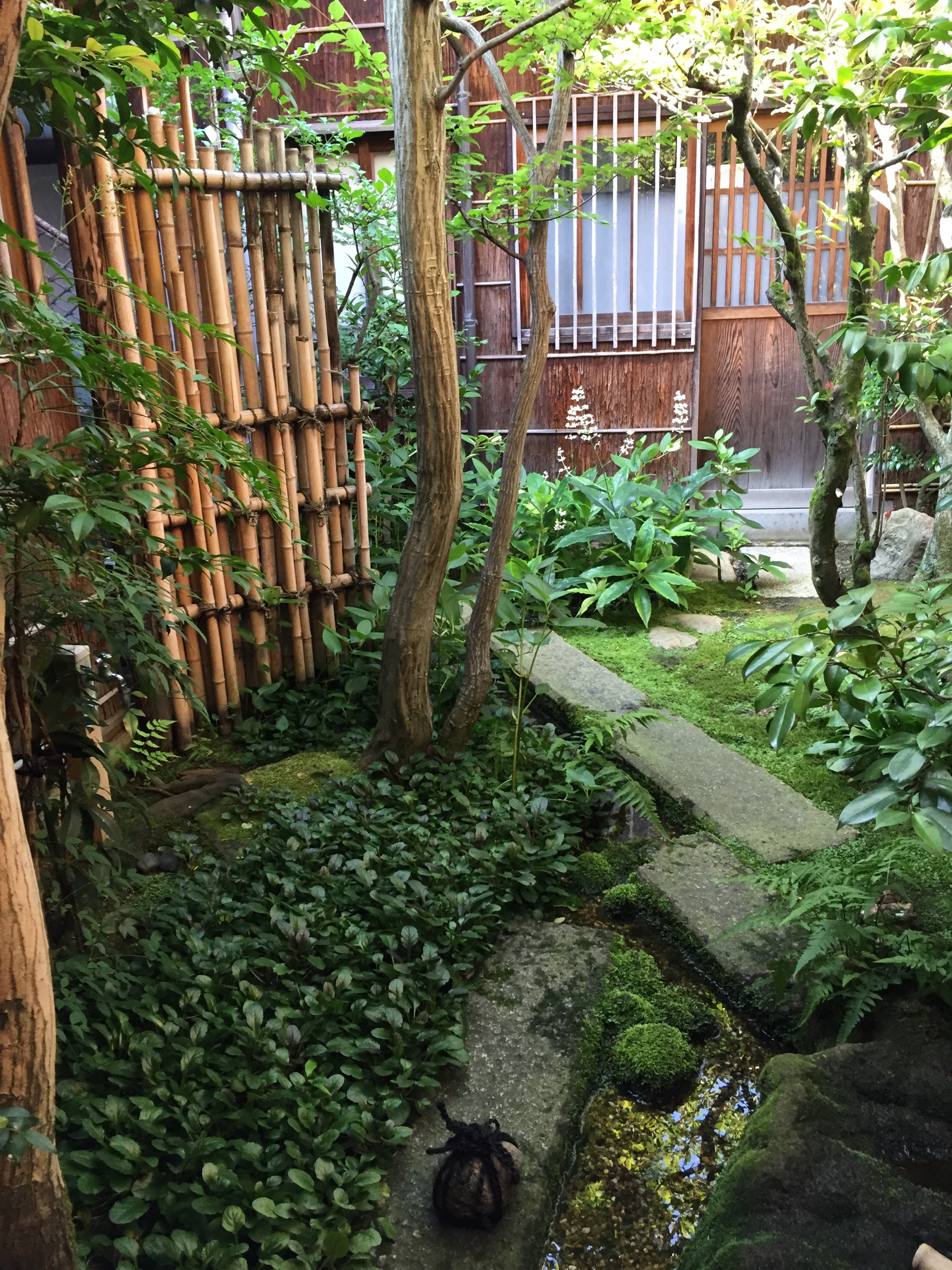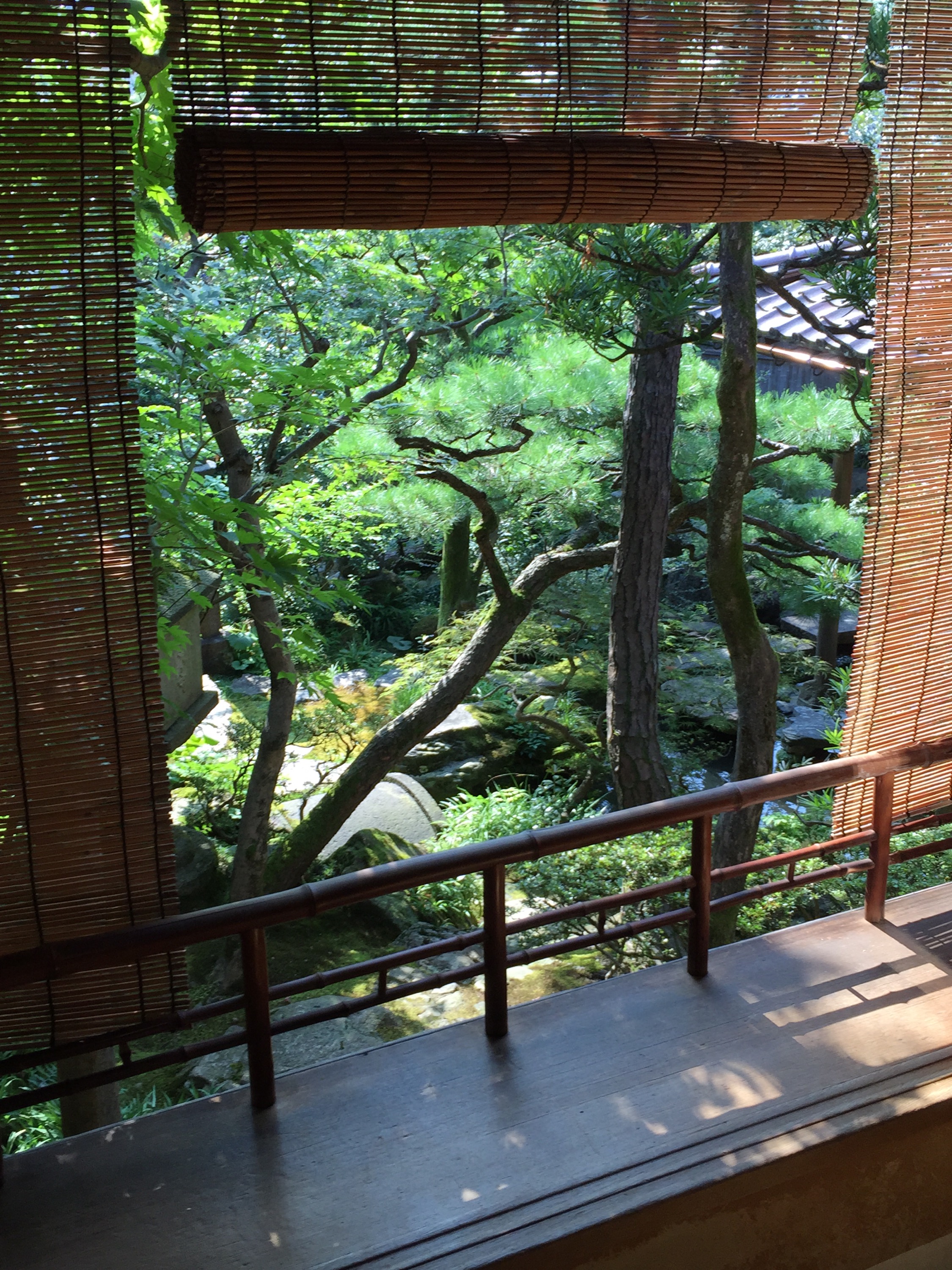Had no idea what to expect from Kanazawa… (after Maizuru, though, expectations were pretty low 😉 ). We did our research of course, and realised pretty quickly that it is a largish place (pop. 460,000) and the sights we wanted to see were quite spread out. So decided to do another ship tour as we would have been up for very expensive cab rides anyway, and this way we get dropped in nice and close to the things we want to see as well as a guide who can hopefully give us a pile of additional local information on the places we wanted to visit.
Kanazawa, in the Ishikawa Prefecture, is one of the few remaining castle towns of Japan and is best known for Kenroku-en Castle and Kenroku-en Garden complex, and it’s extremely well preserved samurai and geisha districts. It also has a lot of beautiful temples (Japan has temples, temples, everywhere!) and is well known for it’s traditional arts and crafts – especially the gold leaf work that is so prevalent in many Japanese decorative arts pursuits – and has a lot of museums. We chose to go tot he Kenroku-en Gardens, followed by the geisha district and the samurai district.
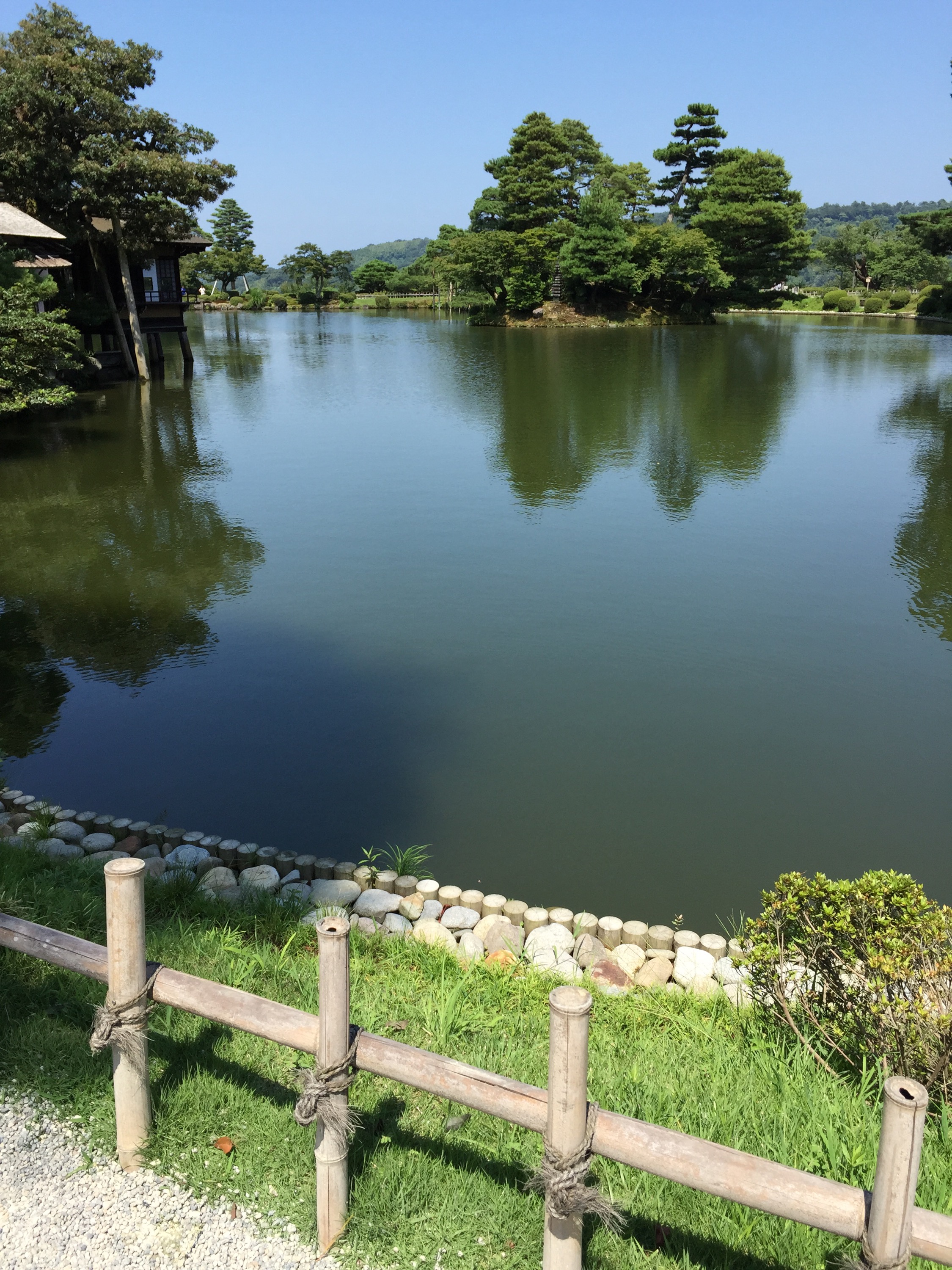 The Kenroku-en, Edo period, Garden, is regarded as one of the top three gardens in Japan. The name kenroku means – ‘combined six’ and was inspired by a famous Sung Dynasty garden in China that dictated six attributes are required for ‘perfection’: seclusion, spaciousness, artificiality, antiquity, abundant water and broad views. Kenroku-en has all these attributes. Originally the garden just belonged to an outer villa of the Kanazawa-jo (Kanazawa Castle), but was later enlarged to serve the castle proper. The castle was completed in the early 19th century and the gardens were opened to the public in over 135 years ago in 1871. It was truly beautiful, full o graceful ponds, steams and waterfalls, quaint bridges and little teahouses. I wish we had more time here to just find a seat with a lovely vista and listen to the water trickling by.
The Kenroku-en, Edo period, Garden, is regarded as one of the top three gardens in Japan. The name kenroku means – ‘combined six’ and was inspired by a famous Sung Dynasty garden in China that dictated six attributes are required for ‘perfection’: seclusion, spaciousness, artificiality, antiquity, abundant water and broad views. Kenroku-en has all these attributes. Originally the garden just belonged to an outer villa of the Kanazawa-jo (Kanazawa Castle), but was later enlarged to serve the castle proper. The castle was completed in the early 19th century and the gardens were opened to the public in over 135 years ago in 1871. It was truly beautiful, full o graceful ponds, steams and waterfalls, quaint bridges and little teahouses. I wish we had more time here to just find a seat with a lovely vista and listen to the water trickling by.
During the 15th century, Kanazawa had an autonomous Buddhist government that was ousted in 1583 by Maeda Toshiie – head of the powerful Maeda clan. Kanazawa apparently means ‘golden marshes’ and the region was extraordinarily wealthy given its rice growing capacity – some 5 million bushels of rice per annum and this wealth allowed the Maeda to heavily patronise the culture and the arts. Thanks to its lack of military targets, the city was spared most of the destruction of WWII, meaning that its veritable plethora of religious, historical and cultural sites are remarkably well preserved, and I never would have thought it possible, but I believe Kanazawa’s historical districts are even more beautiful than Kyoto.
 After the gardens we went to the Higashi-chayamachi, Kanazawa’s famous geisha district. The entire area is a beautiful atmosphere of stunning Edo architecture, with many of the areas okiya (geisha houses) and ochaya (tea houses) built in the early 1800s. In its heyday, the Higashi-chayamachi boasted over 400 registered geisha working in the various ochaya. Now there is about 40 geisha in the area and most of them own and operate their own tea houses. They no longer live in okiya and are no longer beholden to the powerful matriarchs who traditionally controlled the okiyas.
After the gardens we went to the Higashi-chayamachi, Kanazawa’s famous geisha district. The entire area is a beautiful atmosphere of stunning Edo architecture, with many of the areas okiya (geisha houses) and ochaya (tea houses) built in the early 1800s. In its heyday, the Higashi-chayamachi boasted over 400 registered geisha working in the various ochaya. Now there is about 40 geisha in the area and most of them own and operate their own tea houses. They no longer live in okiya and are no longer beholden to the powerful matriarchs who traditionally controlled the okiyas. 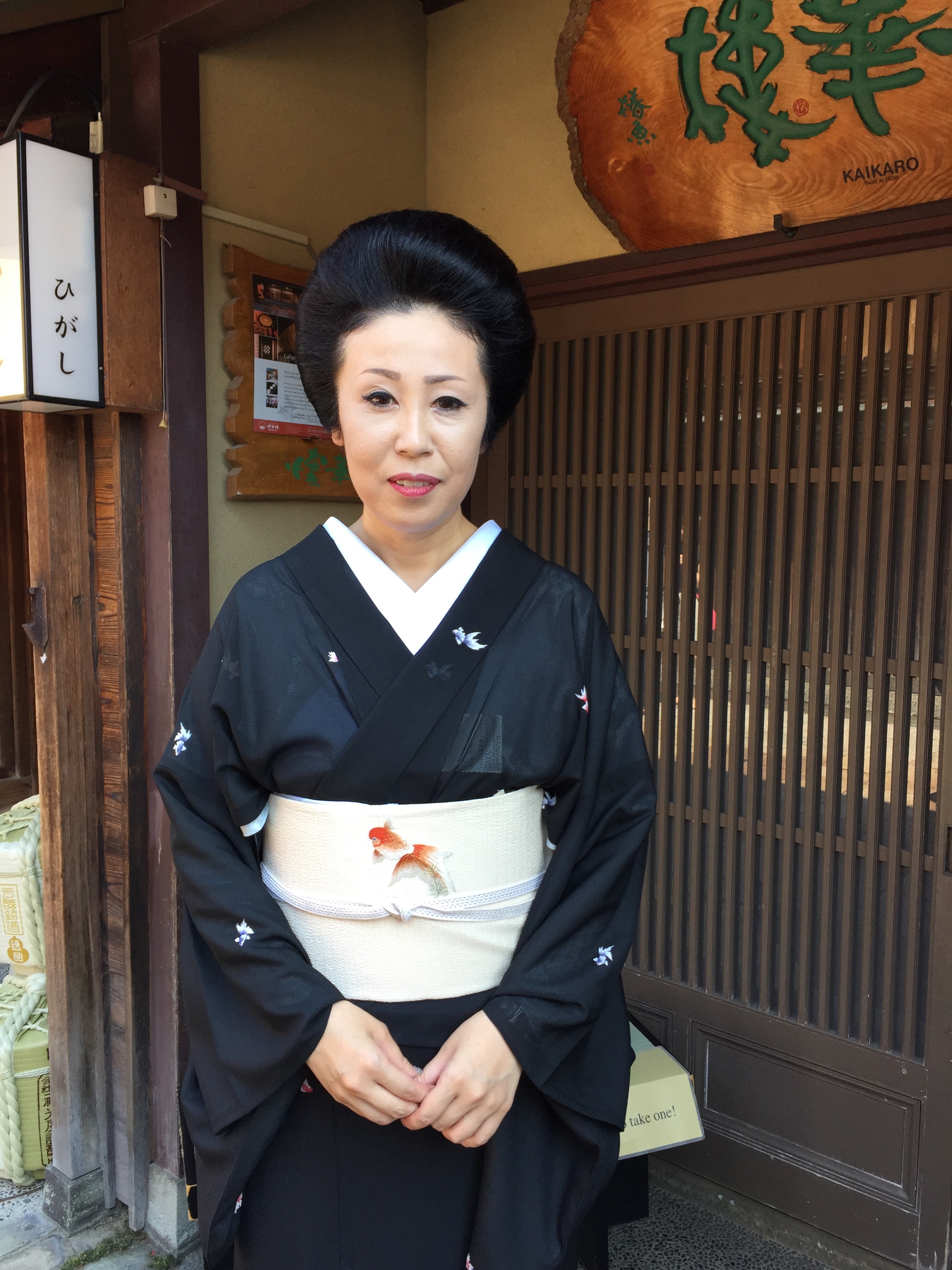
We had the good fortune to meet a lovely lady, Hanako. She was standing outside her ochaya watching a flood of tourists come through what is probably a rather quiet area during the day. I stopped and bowed, said ‘Konnichi wa’, and told her she looked beautiful in her sheer black kimono. We struck up a conversation and it turns out Hanako owns the tea house she was standing by, and has been a geiko for many years.
She is one of the few geiko of the Higashi-chayamachi who entertains foreign clients during the day as she has excellent English and French, but she made a point of telling me that her night clients are chosen in the traditional fashion – they must be introduced by someone who already patronises her tea house and has become a trusted client. I think she was wanting to make sure to let us know that she doesn’t entertain just anyone, even though she does entertain foreigners. We spoke briefly about dance, music, and the artistry that successful geiko must attain.
Hanako told me that playing the shamisen (three stringed lute/guitar type instrument) was her particular talent. It was such a wonderful encounter. I had an opportunity to tell her how fascinated I was with the geiko training and lifestyle, and how I feel we have nothing like it in the West. I asked her what it was like, entertaining such diverse and varied people and asked if she enjoyed making conversation with so many different clients. Hanako said she very much enjoyed her work, and had met ‘many intelligent and power-like people’. She was extremely gracious,and was as curious about the Diamond Princess cruise ship and how many people were on it etc, as I was curious about the life of this real life geiko. I could have talked with her for hours, but felt I couldn’t keep her (her time is money after all!), and formally thanked her for speaking with me as we left ‘Duomo-arigatou-gozimas’. Yes, it’s taken a while but I have acquired some basic Japanese so as not to embarrass myself. Meeting Hanako just made my day!
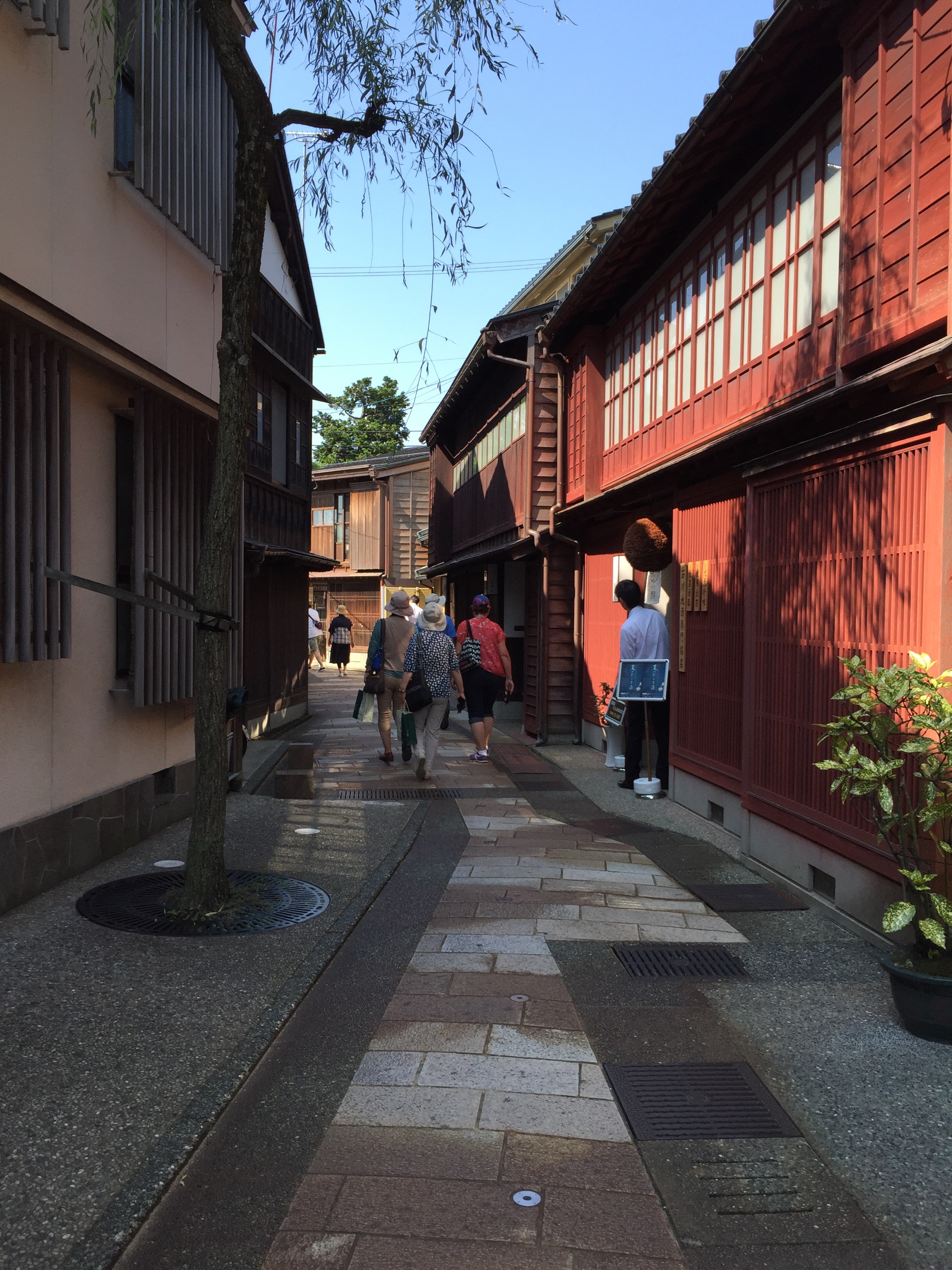


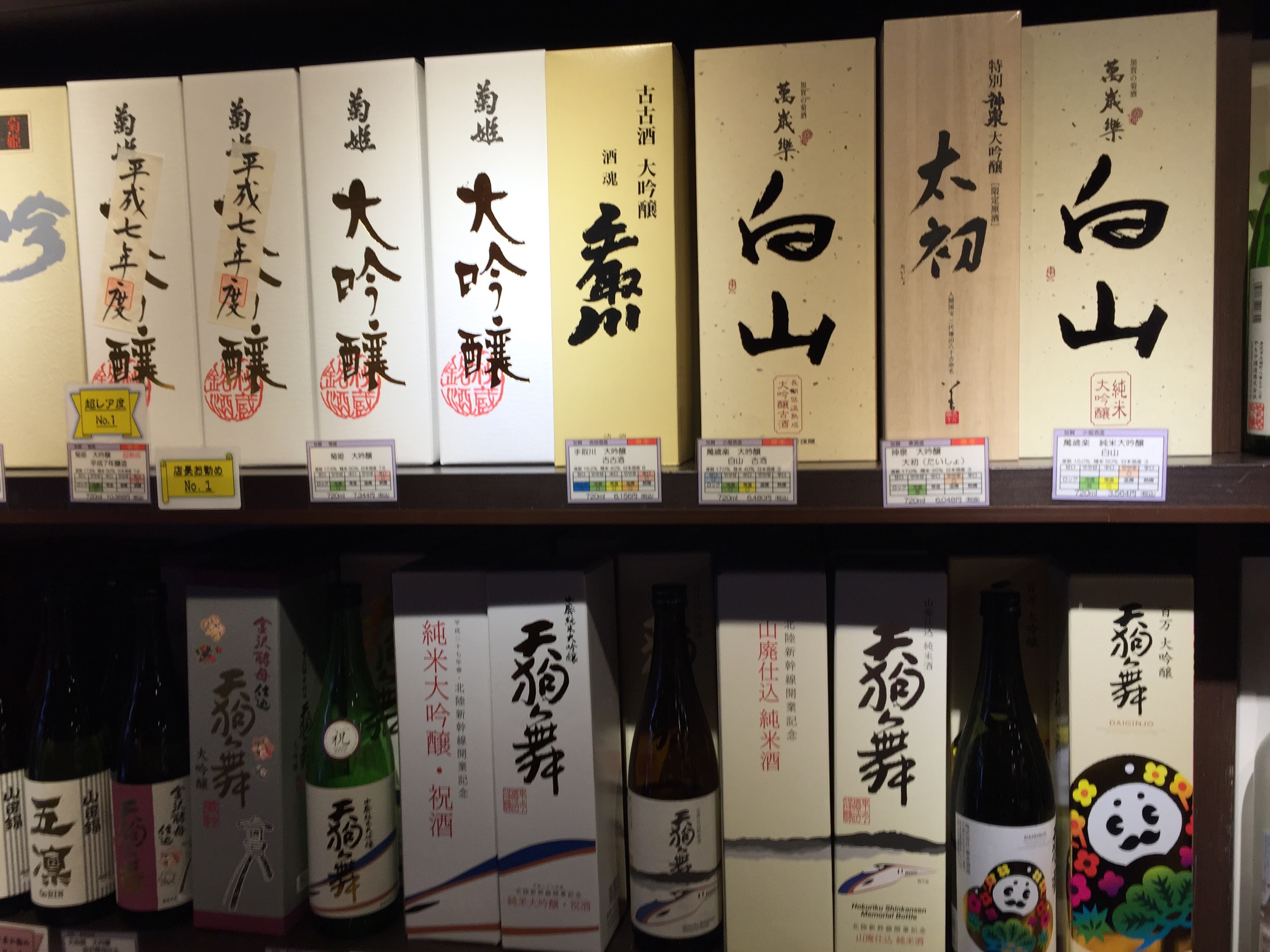
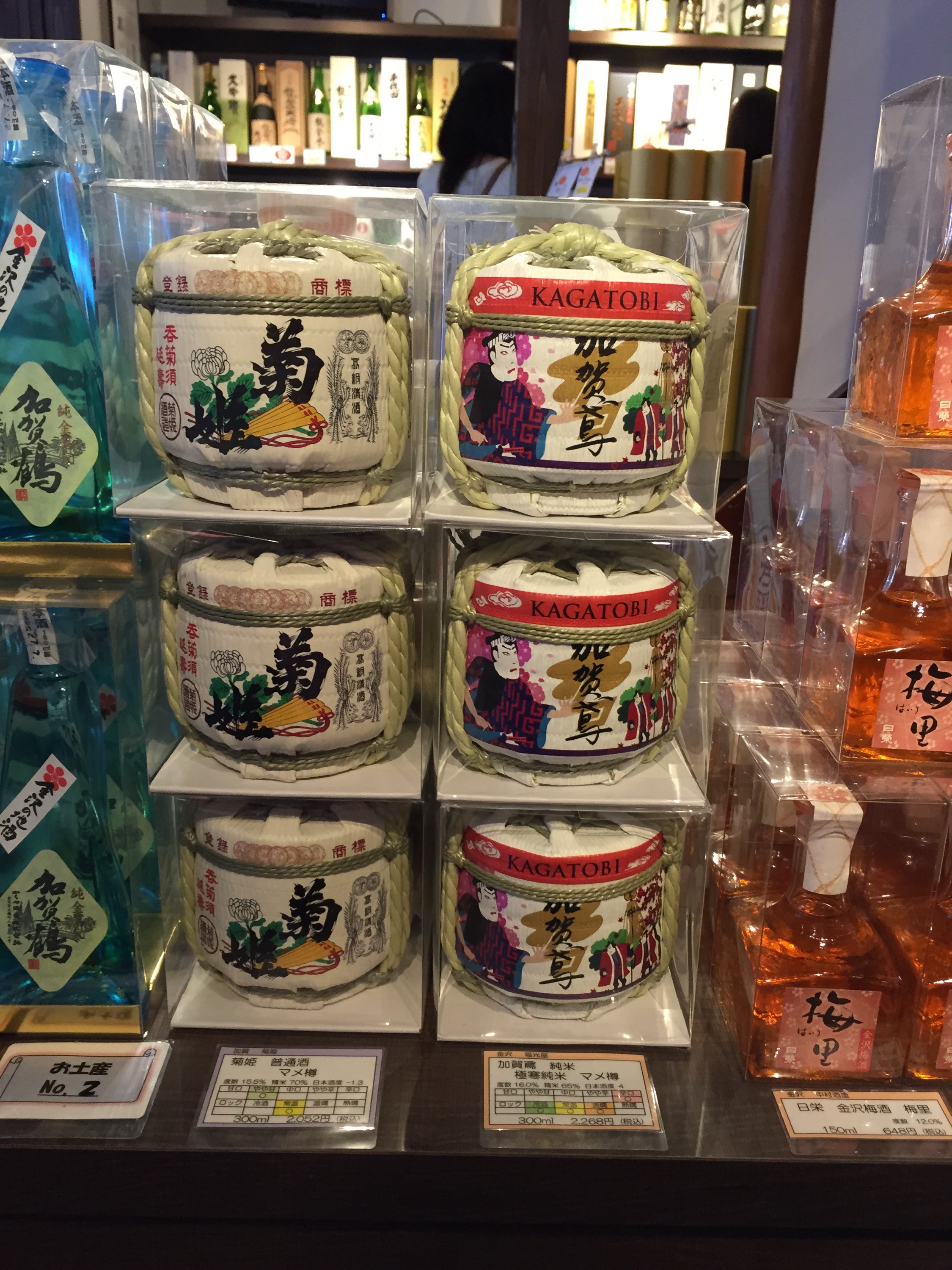
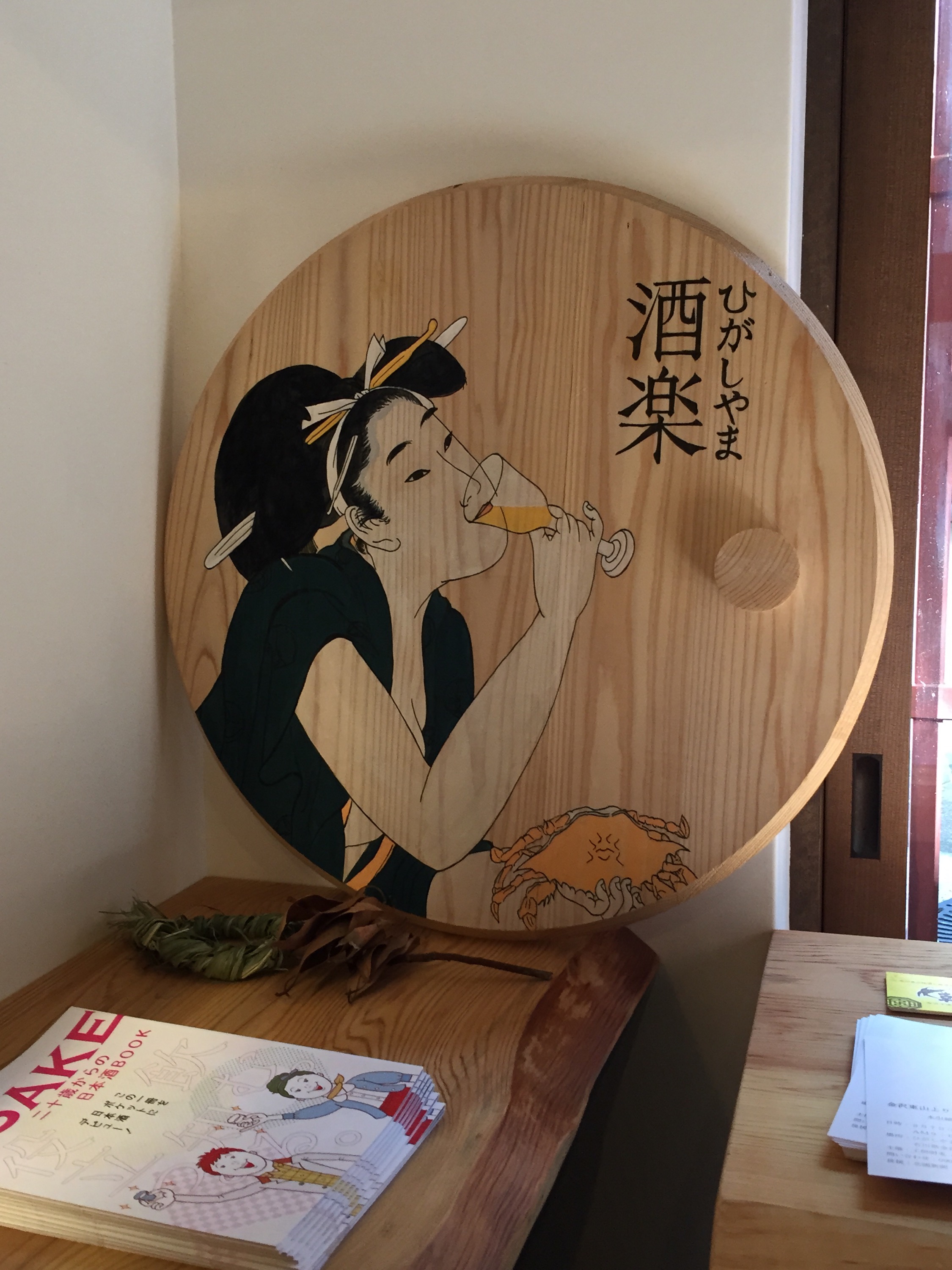
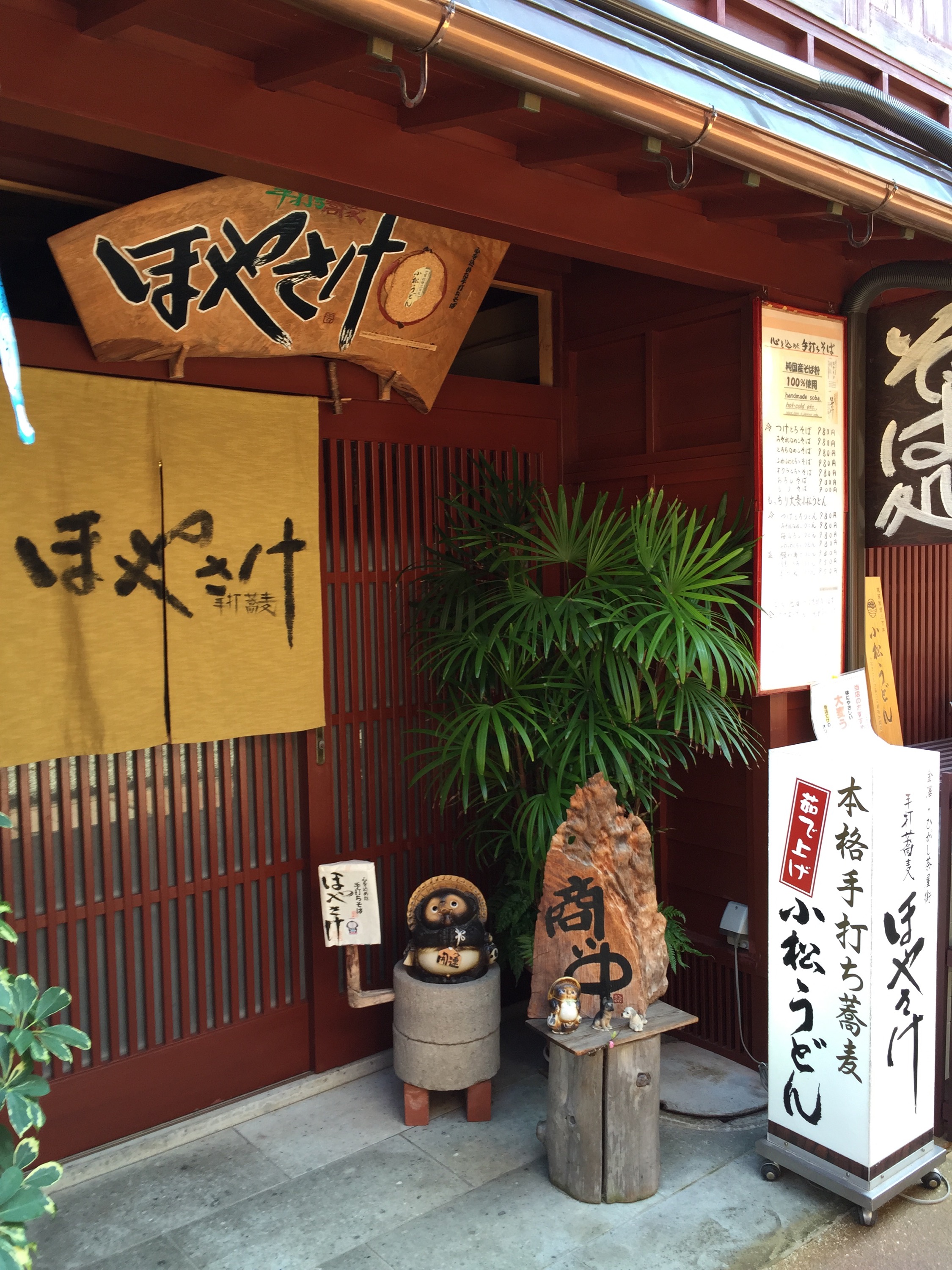
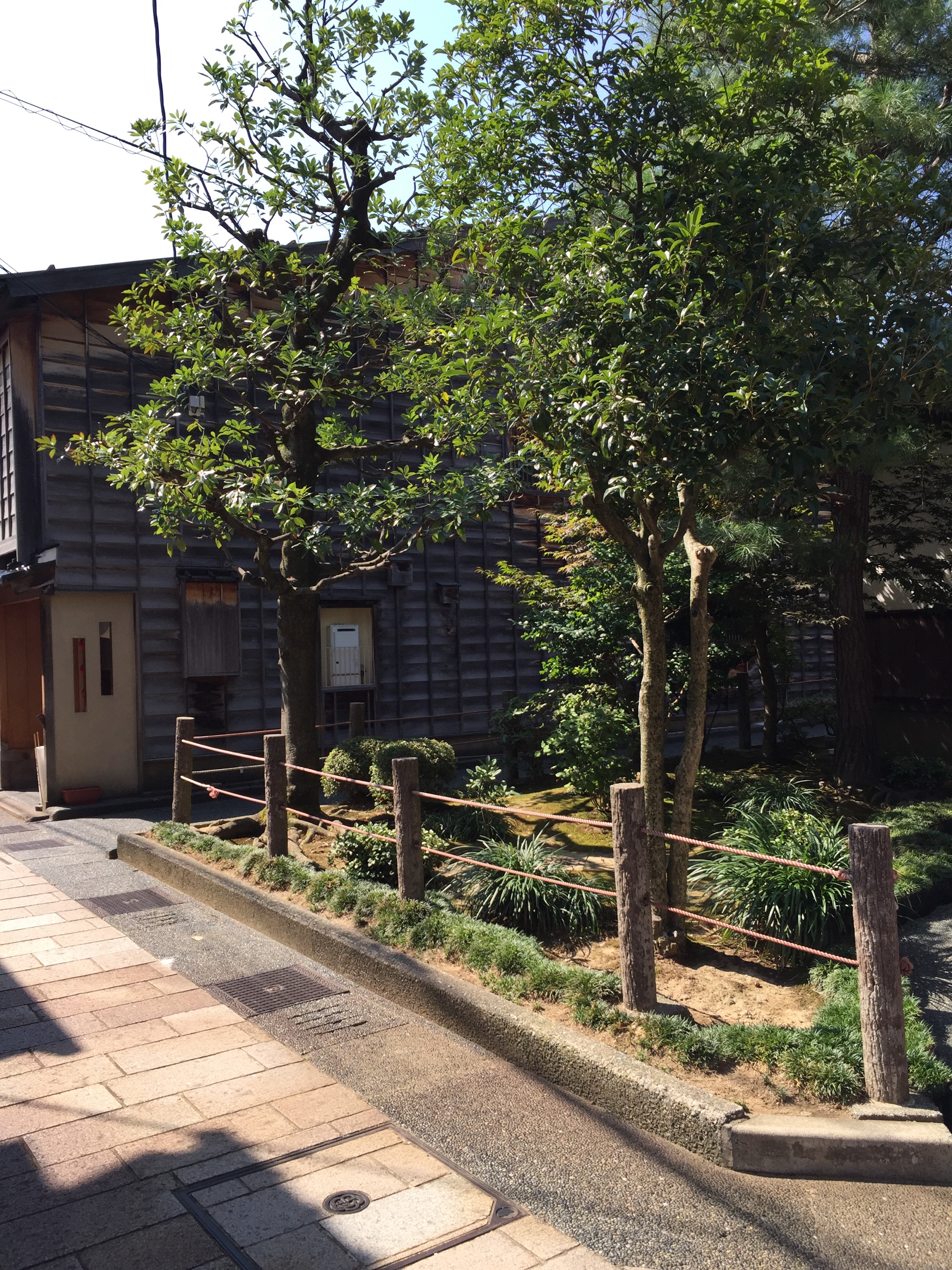
After a lovely wander through the Higashi-chayamachi geisha district, we then made our way to the Nagamachi samurai district. We had an opportunity to enter the Nomura Samurai Houses which was built in the 1770s. It offers a unique look at how a middle class samurai warrior lived. It is also well known for its private garden and proudly displayed a plaque near the front door listing it as the number one private garden in all Kanazawa. The Nomura House has some beautiful artefacts on display, some armour, painted screens, a private house shrine/altar, and some other Edo period personal effects etc.
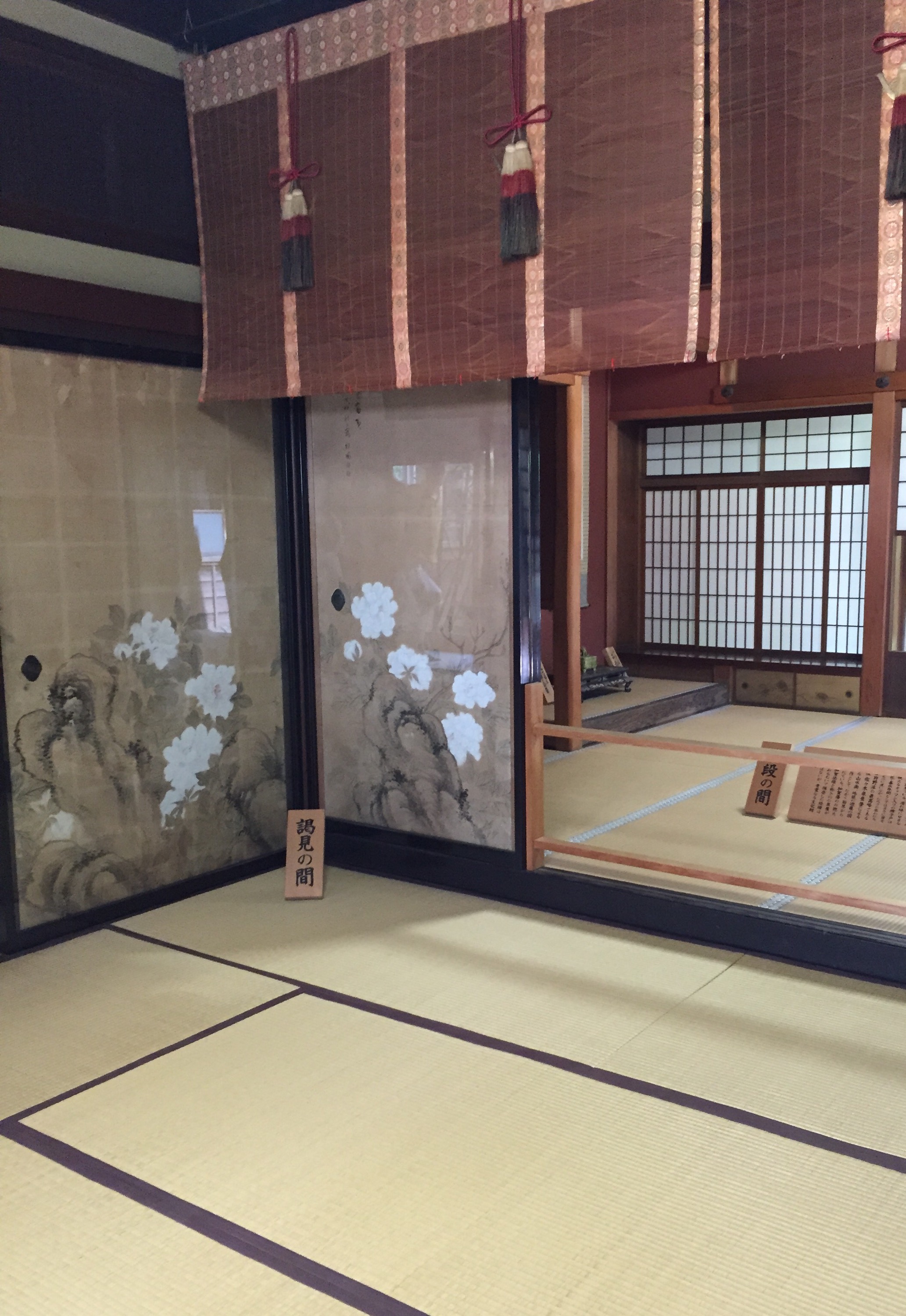
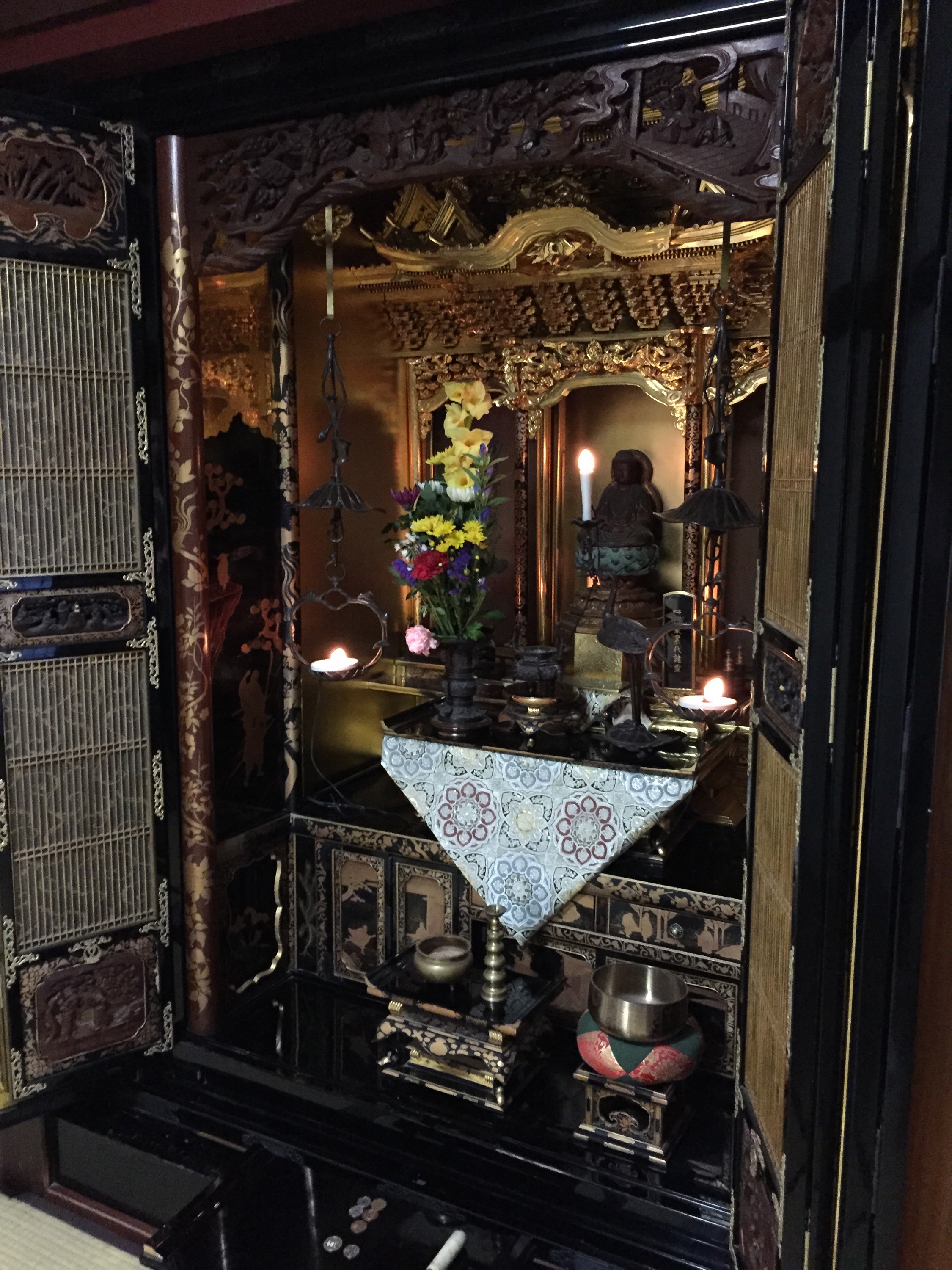 Then it was back to the ship – takoyaki on the pier and home on the Diamond Princess again… what a wonderful place Kanazawa turned out to be. It definitely exceeded expectations and is a very successfully blended historical / modern city. Have to put it on your list, I think I’d stay here a couple of days in order to be able to take in the sights as well as have time to explore the traditional crafts practiced in the city.
Then it was back to the ship – takoyaki on the pier and home on the Diamond Princess again… what a wonderful place Kanazawa turned out to be. It definitely exceeded expectations and is a very successfully blended historical / modern city. Have to put it on your list, I think I’d stay here a couple of days in order to be able to take in the sights as well as have time to explore the traditional crafts practiced in the city.

